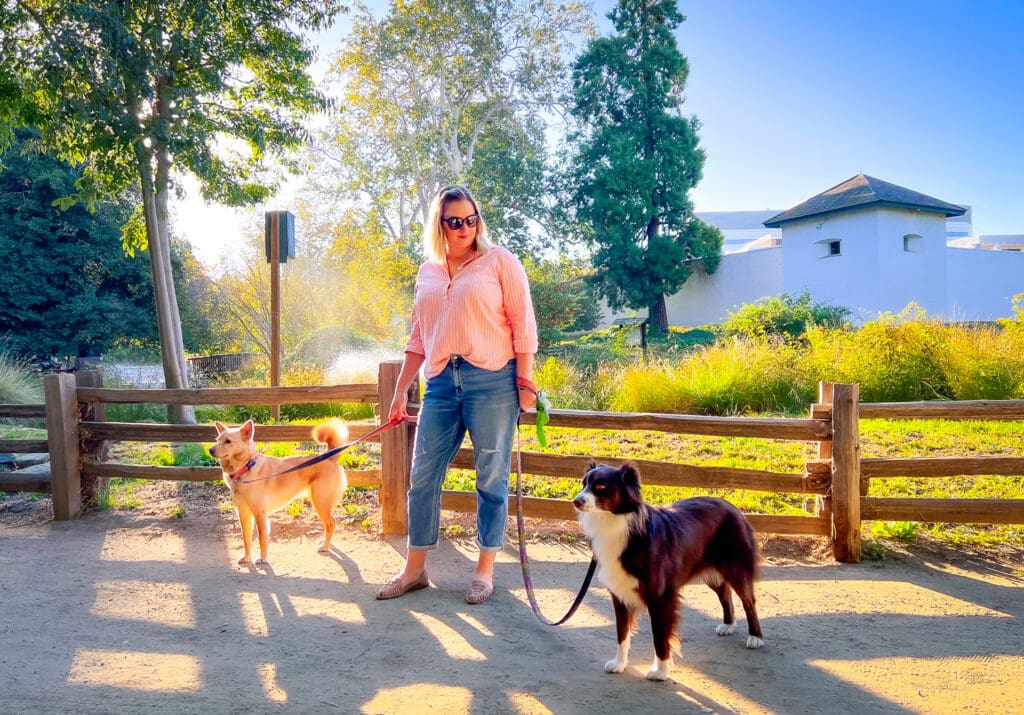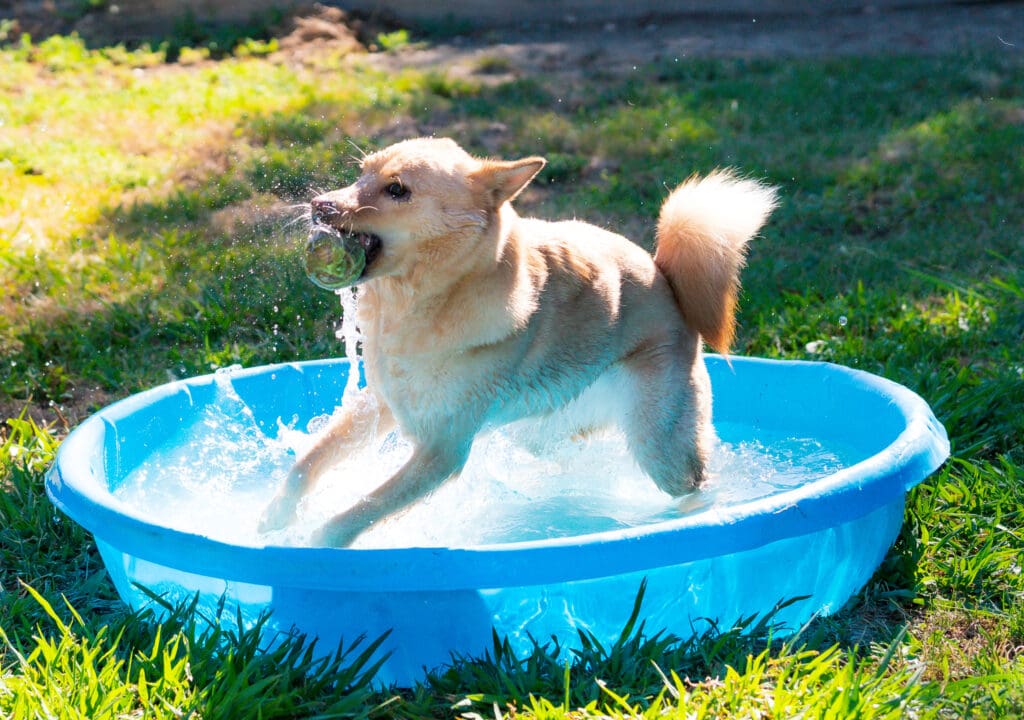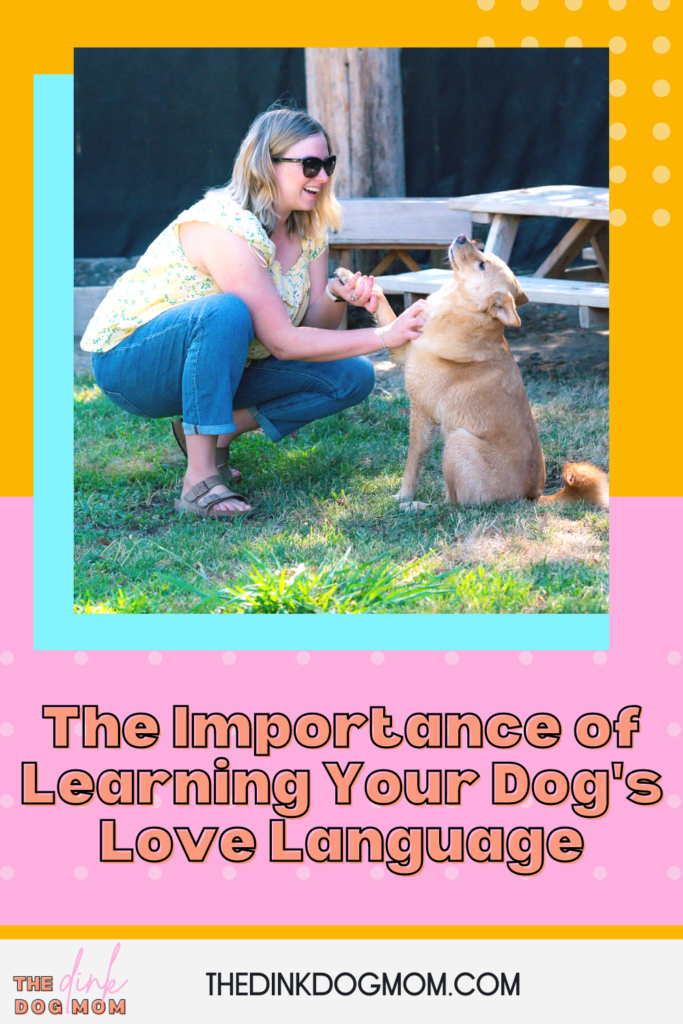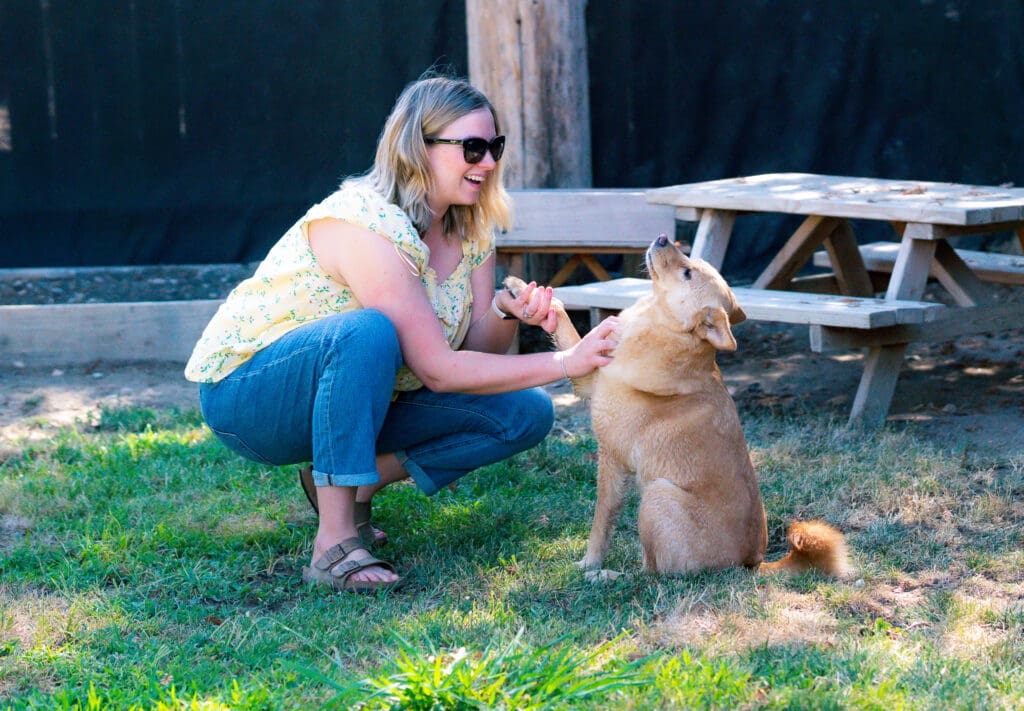Are you familiar with the five love languages? The concept was outlined in a book by Dr. Gary Chapman, and it is based on a simple premise that different people with different personalities give and receive love in different ways. Lately, I’ve thought a lot about how this applies to dogs. Our dogs are unique individuals with distinct personalities, and they, too, give and receive love in different ways. Learning our dog’s love language allows us to fulfill their needs the way they want and need them fulfilled. It enables us to communicate with our dogs more effectively, and it helps avoid problems that arise when we try a “one size fits all” approach (you know, like assuming “all dogs” should enjoy cuddling).
In honor of National Dog Day this Friday, I want to dive a bit more into the importance of learning your dog’s love language, and provide a little background for how each language can apply to your dog. If you’d like to learn your dog’s primary love language, take my short quiz!
Why Learn Your Dog’s Love Language?
It’s easy to speak about raising happy dogs in broad generalizations. Dogs need physical exercise, mental stimulation, and positive training to help them navigate our human world. But what does that look like in practice? If we assume our dog should do what someone else’s dog does, we can set ourselves up for disappointment both in our dogs and in ourselves. For example, if we think fetch is the best form of exercise, we might get frustrated if our dog isn’t interested in the game, or even blame ourselves for not doing a better job of training it.
Instead, let’s approach responsible dog guardianship from the angle of love languages. Maybe your dog enjoys sniffing out treats, or they would prefer a quiet walk somewhere. Both of these options are forms of physical exercise that appeal to different love languages.
Using your dog’s love language makes them happy, and it decreases your frustration as an owner. Your communication improves, and both you and your dog experience less stress. Enrichment becomes more effective, and training becomes more efficient.

What are the Love Languages And How Do They Apply to Dogs?
The five love languages are:
- Physical Touch
- Words of Affirmation
- Receiving Gifts
- Acts of Service
- Quality Time
Once you understand the basic premise of each language, you can tailor things like physical exercise, mental stimulation, and positive training to align with your dog’s love language. This tailored approach ensures our dog’s needs are met in a way they enjoy, which increases their happiness and avoids frustration.
Imagine this: You hate seafood, but your partner only takes you to upscale seafood restaurants for date nights. You would be miserable, and overtime you might even grow to resent your partner! Instead, your partner could take you out to a fancy French restaurant that you love. Both are dinner dates, but which one will leave you feeling happy and fulfilled versus frustrated and resentful?
Physical Touch
All dogs love getting pet, right? Wrong! While some dogs live for physical touch, others don’t really like it and be very selective when receiving it. It can be hurtful if your dog doesn’t want to cuddle with you or darts away from your hand when you try to pet them. But, when we recognize that our dogs show and receive love in other ways, we don’t have to take this behavior so personally. Dogs whose primary love language is Physical Touch are happiest when receiving physical affection, and they can be quick to “abandon” their owner if someone else is more willing to give pets.
Words of Affirmation
Have you ever heard the myth that “bribing” your dog with treats during training is bad, and your dog should work for your praise only? This doesn’t work unless your dog’s love language is Words of Affirmation! These dogs are very responsive to your voice, for good or for bad. This means you can really hype them up and get them excited with your dog talk, but you can also make them shrink if you have even the slightest hint of frustration or anger in your voice. These dogs can seem sensitive and pick up on your ~vibes~ really well.
Receiving Gifts
What dog doesn’t love toys and treats?! Well, believe it or not, they exist! Our late grandpa dog, Totes, had absolutely ZERO interest in toys, aside from playing fetch with a tennis ball (his love language was totes physical touch, btw). Some dogs, on the other hand (coughJUNEcough), go absolutely nuts for a new toy or treat, and they are happy to play on their own (IE with a chew or stuffy toy) rather than a cooperative game like fetch or tug. These are also the dogs who really love puzzle toys, sniffing games, and other activities that yield a reward (gift).
Acts of Service
So far, this has been the most common result in the dog love language quiz! And, that’s not really surprising to me. Dogs were originally domesticated and bred to help humans with various tasks, so it makes sense that a lot of dogs love having a “job” to do. This could be learning new tricks and cues, competing in dog sports, or playing a cooperative game like fetch. Dogs whose primary love language is Acts of Service are the dogs who love to do things with you: play, hike, train, etc. While a dog whose love language is Gifts loves a sniffy game for the prize, a dog whose love language is Acts of Service loves a sniffy game for the game itself.
Quality Time
Last but not least, quality time. This is often the love language of quiet or shy dogs. They are happiest with their person and tend to be more selective about who they bond with (human and dog alike!). While some of these dogs love to cuddle, others are perfectly content to just exist in the same space as you. Fulfilling this love language can be tricky, because it’s subtle. It’s a quiet walk in an empty park; one-on-one playtime like tug; simply sitting on the floor with your dog to stroke their ears. Dogs whose primary love language is Quality Time just want your time and attention.


Can my dog have more than one love language?
Absolutely! Dogs (and people) almost always have secondary love languages. Some can even have a combination of all five. However, most have one “primary” love language, which is the strongest love language. For example, June’s primary love language is Receiving Gifts, but once she gets comfortable with a person, Physical Touch becomes a secondary love language for her. Additionally, dogs may have separate love languages for how they receive versus give love.
Remember, none of these love languages are neat, mutually exclusive boxes. There is definitely overlap between them. A good way to approach this nuance is to think of your dog’s primary love language as the “best” language rather than the “Right” or “Correct” love language.
Now, what’s your dog’s love language? Share it in the comments!








5 Responses
Hello Blair. Learning a dog’s language is advantageous for a dog owner because a dog’s language is quite different from human language, and as a result, we sometimes cannot understand what our dog is attempting to communicate with us. Thank you for sharing this article. Keep posting.
Hi there! Thanks so much for the comment.